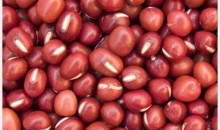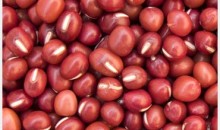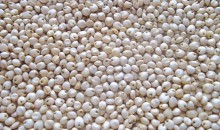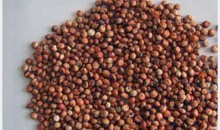BRISBANE: +61 7 350 36778 MELBOURNE : +61 3 994 84091 SYDNEY: +61 2 802 28423
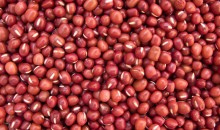
Sweet Red Sorghum. It may be known by the common name of sorgos and has sweet, juicy stems and may grow 6 to 14 feet tall. The seeds of sorgos are small and bitter. This type of sorghum grows a heavier stock and is cultivated for the sweet juice found in the stalk, which is boiled down into sorghum syrup. Silage and animal feed can be made from the leaves and stalks of sweet sorghum.
Grain Red Sorghums. These include what we commonly known as kafir, kafir corn, durra, milo, maize, Egyptian corn, African millet, Black Indian millet and pearl millet. In some market areas and in selected health food stores, distributors often represent confusion between the sorghums referred to as millets and other related millets.
Grain Red sorghum can grow 15 feet high. However, most of Red sorghums we know in the U.S. grow only 2 to 3 feet high, permitting harvesting with standard grain harvesters. With nearly 95 percent of the nutritive value of corn, the seeds of grain sorghum are nutritionally valuable for all classes of livestock and poultry. Red Grain sorghums are excellent for forage. Farmers often feed the grain to livestock or make the entire plant into silage.
Grass Sorghums. These include sudan grass and tunis grass and are used for pasture and forage. They are annuals and grow quickly. They are generally used for summer pasture. Johnson grass, a perennial grass sorghum, is considered a pest when out of control, but makes an excellent hay and cattle feed.
Broom Corn Sorghum. This variety has branches of the panicle of the plant which are elongated and tough when mature. Thus, its major use is being adapted to the manufacture of whisk brooms. In our markets in Nebraska, we often find seeds still in the broom straws which can be planted and grown as immature plants in this climate.
Red Sorghum comes in a variety of types, and its uses range from broom straw to syrup. Its wide usage explains why it is so universally grown. Depending on the type of Red sorghum, the pith may be juicy or dry. The leaves resemble corn leaves and are about 2 inches wide and 2 1/2 feet long. The other colors of the grain may be white, yellow, or brown. [Certified food grade sorghum varieties are white.] Red Sorghum is higher in protein and lower in fat than corn. The mineral composition differs only slightly from corn, and the vitamin content in grain sorghum is similar to white corn.Sweet Red Sorghum. It may be known by the common name of sorgos and has sweet, juicy stems and may grow 6 to 14 feet tall. The seeds of sorgos are small and bitter. This type of sorghum grows a heavier stock and is cultivated for the sweet juice found in the stalk, which is boiled down into sorghum syrup. Silage and animal feed can be made from the leaves and stalks of sweet sorghum.
Grain Red Sorghums. These include what we commonly known as kafir, kafir corn, durra, milo, maize, Egyptian corn, African millet, Black Indian millet and pearl millet. In some market areas and in selected health food stores, distributors often represent confusion between the sorghums referred to as millets and other related millets.
Grain Red sorghum can grow 15 feet high. However, most of Red sorghums we know in the U.S. grow only 2 to 3 feet high, permitting harvesting with standard grain harvesters. With nearly 95 percent of the nutritive value of corn, the seeds of grain sorghum are nutritionally valuable for all classes of livestock and poultry. Red Grain sorghums are excellent for forage. Farmers often feed the grain to livestock or make the entire plant into silage.
Grass Sorghums. These include sudan grass and tunis grass and are used for pasture and forage. They are annuals and grow quickly. They are generally used for summer pasture. Johnson grass, a perennial grass sorghum, is considered a pest when out of control, but makes an excellent hay and cattle feed.
Broom Corn Sorghum. This variety has branches of the panicle of the plant which are elongated and tough when mature. Thus, its major use is being adapted to the manufacture of whisk brooms. In our markets in Nebraska, we often find seeds still in the broom straws which can be planted and grown as immature plants in this climate.
Red Sorghum comes in a variety of types, and its uses range from broom straw to syrup. Its wide usage explains why it is so universally grown. Depending on the type of Red sorghum, the pith may be juicy or dry. The leaves resemble corn leaves and are about 2 inches wide and 2 1/2 feet long. The other colors of the grain may be white, yellow, or brown. [Certified food grade sorghum varieties are white.] Red Sorghum is higher in protein and lower in fat than corn. The mineral composition differs only slightly from corn, and the vitamin content in grain sorghum is similar to white corn.
